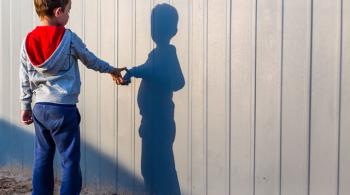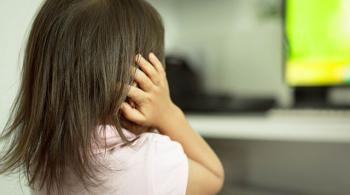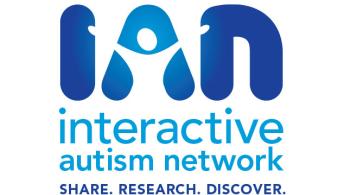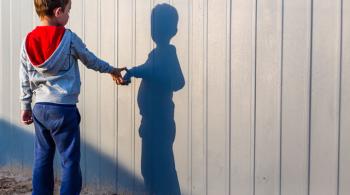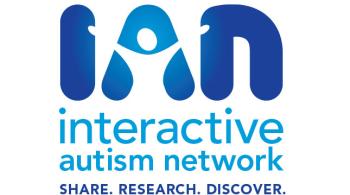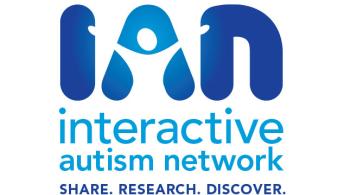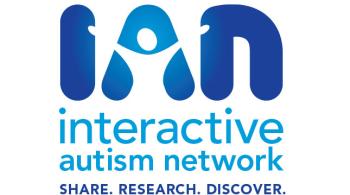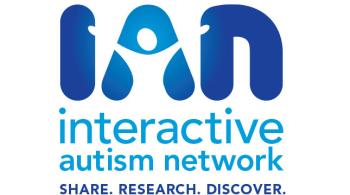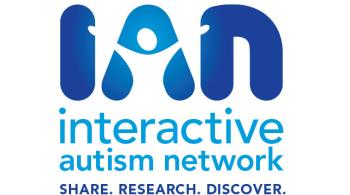Marina Sarris
Interactive Autism Network
Date Published: January 8, 2019
Amanda Olsen says parenting a child with autism is like being a tour guide – someone who must translate the customs and language of the nonautistic world. But when you have two children with autism, like she does, the job is considerably more complicated. That's because many siblings with autism fall along different parts of the spectrum, and her daughters are no exception.
"I'm my children's tour guide to the world, only I'm touring two different children in two different countries – one's in France and one's in Spain – at the same time. I'm having to break down the language and cultural differences and customs of two countries for them," she explained.
If that sounds challenging, that's because it is. The Olsens are among a subset of families that researchers call "multiplex." That means they have multiple members with autism spectrum disorder (ASD). Among all families affected by autism, up to 19 percent have more than one child with the disorder, according to one large study.1
Multiplex families, especially those who have twins, have led to many of the breakthroughs in our understanding of autism. Four decades ago, researchers published a groundbreaking study of twins that suggested a genetic link to autism.2,3 That study, among others, helped disprove an earlier notion that autism was caused by bad parenting.
In the 21st Century, scientists studying multiplex families began identifying some of the genes altered in autism.4 They also relied on studies of identical and fraternal twins to estimate the role of environmental influences in autism.5 Unlike other siblings, twins share the same environment, their mother's womb, at the same time.
Beyond those issues, however, scientists have devoted considerably less time to studying the day-to-day lives of families like the Olsens. A recent search turned up very few studies about stress, coping and resilience among these families. What is it like to raise two children who share an autism diagnosis, but who may have very different symptoms and needs?
An Early Arrival, An Early Diagnosis
Cindy Yeager's twins, a boy and girl, arrived early, as twins often do. She credits a friend, an occupational therapist, with pushing her to enroll them in Maryland's program for infants and toddlers with developmental delays. A teacher in that program noticed that her son, Aaron, flapped his hands, a behavior often seen in autism.
That led to appointments with a child psychiatrist, who diagnosed both with autism. Mrs. Yeager got the news on the same day. She took it in stride. "It wasn’t a shock because we knew something was wrong," she said. And it offered hope: "When you get the correct diagnosis, you get the correct services. Now their teachers knew what to do."
Fraternal twins are more likely to both have autism than siblings who are not twins. Scientists theorize that may because they share the same prenatal environment. Identical twins, who have the same genes, have the highest rate of both having autism – 88 percent – among all siblings.6
Although both Yeager twins received autism therapies and early intervention services, they travelled different paths, as siblings with ASD often do.
Hayley began talking at age 4, and entered a regular kindergarten class at 5, with a special education plan. Aaron did not develop speech, and he enrolled in an intensive program at a different school. For the Yeagers, that meant attending special education meetings – and getting to know teachers and therapists – at separate schools.
They also needed to make time for their oldest daughter, who does not have autism. In the early years, Mrs. Yeager made one-on-one time for her oldest daughter, and the twins, by taking advantage of different preschool schedules. "There was a period of time during the week when my oldest daughter was home and the twins were not, and there was a time when the twins were home, and she was not," recalled Mrs. Yeager, who works part-time as a music assistant at her Baptist church.
Now 18, Aaron communicates with picture symbols and some sign language. He needs help with many everyday activities, such as preparing food or pouring a drink. His entire family, including his twin, pitches in, as do others.
Some activities are difficult for Aaron. "There are a lot of things we just can't do, and we have to plan things ahead of time," Mrs. Yeager explained. For example, Aaron has trouble sitting through a movie, so her husband may take their daughters to the theater, while Mrs. Yeager stays home with Aaron. Sometimes one of his sisters, a family friend, or a member of their church will stay with Aaron so other family members can attend church, go to an appointment, or run an errand. "We have a great church family, and they surround us with a lot of help," she said.
And sometimes, when the family is out together, someone must bring Aaron home if he becomes overwhelmed or upset by the experience. His twin understands. "I know what he's going through since I have autism as well," she said. "I feel like home is the one place where he feels most comfortable."
Hayley credits the attention of her family and others with helping her achieve. An honor student in high school, she is now studying visual communication and digital media arts at a college within commuting distance of her home. "I feel like I have been progressing more because of the people who have been helping me: my teachers, friends, people at my church, my parents and other adults. I feel like without them, I would not have made it this far in my life," she said.
Psychologists and researchers say that families who have a network of supporters – people who can lend a hand, or an ear – cope better with stress than families who don't.7
A Study Looks at Moms of Two Children With Special Needs
Parenting two children with special needs is particularly challenging, according to one of the few studies focused on this issue.
Researchers studied mothers who had a teenage or adult child with autism, and a second child with autism or a different disability. Those mothers had more symptoms of depression and anxiety than mothers who had just one child with a disability. They also had more problems with family cohesion (emotional bonding) and with adapting to new situations or needs. "This suggests that families who face competing demands may become less flexible in their ability to accommodate everyone's needs," the authors wrote.8
Educators and therapists often recommend that parents use schedules and routines to help their children with autism manage anxiety and cope with change. Perhaps being less flexible – sticking to the family's plans – may simply be a coping skill, some researchers speculated.9
But what do you do if your children with ASD need different routines?
Two Diagnoses, One Expected and One a Surprise
If you have two people who need to have things be a certain way, they will always butt heads because all kids with autism are different.
Amanda Olsen was concerned about autism, but only in her youngest daughter, who is now 8. "She was not connecting to other people very much. She didn’t interact much. She would listen, but she wouldn't look at you," she said. So she made her an appointment for a psychological evaluation.
Around the same time, one of her older daughters told her that she thought she might have attention deficit disorder. So Mrs. Olsen arranged for her to be tested, as well. She was not particularly surprised when her youngest daughter received an autism diagnosis. But she had not suspected ASD in her older daughter, at least not until she had to fill out questionnaires for their evaluations. The older girl, now 13, was diagnosed with a milder form of autism, which used to be called Asperger's Syndrome.
One common symptom of autism is an insistence on sameness – having things be a certain way, at a certain time. But two children with autism, even sisters, may not want things to be the same way, at the same time. And that can cause difficulties.
"If you have two people who need to have things be a certain way, they will always butt heads because all kids with autism are different," explained Mrs. Olsen, who lives in Idaho. "If everyone was the same, then what I did for one child would be OK for the second child. But it's not. One child wants to be left alone, while the other child wants to have an interaction that annoys the first child. For me, it's a matter of stopping and helping each one to see what's going on, and that can be exhausting, and trying to help each get control of herself."
Mrs. Olsen educates both children at home, along with another daughter and two stepdaughters. The five girls range in age from 8 to 14. "I homeschool because I wanted to be a part of my girls' lives. I wanted to connect with them," she said.
The autism diagnoses led to "crazy Wednesday," one day every week when three of her children have four therapy appointments. The two girls with ASD see occupational therapists, who help them with sensory issues and handwriting. Many people with autism are over- or under- responsive to their senses, such as noise, touch, vision, or balance. They also may have trouble with muscle or hand skills.10 Meanwhile, their sister, who does not have a diagnosis, has occupational and speech-language therapies.
Finding a Kindship With Autism
After the girls were diagnosed, a therapist told Mrs. Olsen that their autism likely "didn't come from nowhere," she recalled. "There's a strong biological component."
As she learned more about autism, she came upon a book by a woman with Asperger's Syndrome and recognized herself in its pages. "I read a list of traits for female autism, and it was me to a 'T.' I realized that there is a group of people who think like me, and I fit in somewhere." She joined online communities of women with current or past ASD symptoms, some of whom struggled as children but learned to "blend in" as adults, she said. Many, like Mrs. Olsen, were born before Asperger's Syndrome became a diagnosis in 1994. Mrs. Olsen does not have an ASD diagnosis, nor is she seeking one.
This kinship with her daughters on the spectrum helps her relate to them in ways that people who do not have autistic symptoms may not, she said. "It's so helpful to understand how they think."
The Family Link
Researchers interested in autism genetics have studied the unaffected parents and siblings from families with multiple children with autism. These family members are more likely to have conversational and social difficulties than
- families who have just one child with ASD11-13 or
- families with typically-developing sons and daughters.14,15
That may suggest an inherited link to autism in multiplex families, but it does not mean that autism is more severe in those children. One study found that, as a group, children with autism from multiplex families had lower levels of autistic symptoms than children who were the only member of their family with ASD.16 That research involved families in the Interactive Autism Network.
Another study reached similar conclusions. In fact, it found that some children with autism from multiplex families had symptoms so mild that they fell below the threshold for autism on one test used to diagnose ASD.17
Perhaps in multiplex families, autism is the result of small genetic changes passed down from one or both parents, scientist theorize. In families with no history of autism, it's possible that autism may arise from a significant genetic change that occurred for the first time in the child with ASD. Many genetic studies are trying to test these and other theories.
Multiple Children, Multiple Rewards
A small gesture to one of my children means the world to them.
Despite the additional challenges, parenting multiple children with autism also brings additional rewards.
For the Yeager family, caring for Aaron may have sparked a desire for independence in his sisters, Mrs. Yeager said. They like to help their brother, and pull together as a family, but they also are self-reliant, she said. "They don't like to be helped. My oldest rarely came to us for help with schoolwork, and Hayley became that way, too," she said. "They are more independent than some of their classmates."
Raising children with autism can give a parent a unique perspective, an appreciation of things that might otherwise be taken for granted with typical children, Mrs. Olsen said.
For example, it may take more effort to nurture connections with those children, she said. "These children really do want to connect. And they don’t know how, and they don't feel it, until someone breaks into their world," she said. So she tries to break into their world by looking at it the way they do. One time she found a tiny object on the floor that seemed like trash to her. But by imagining it through her daughter's eyes, she realized it might be a tiny treasure. When she presented the object to her daughter, the girl was instantly grateful. "A small gesture to one of my children means the world to them."
Another time the 8-year-old told her that she loves her because, when she is pretending to be a dog, her mom acts like she really is a dog, she said. "Those are the little things that help an autistic child to connect with a loved one and feel understood. It's an entrance to that child's world."
And finding that entrance is well worth it, she said. "It's pretty darn amazing."
Additional Resources:
References:
- Ozonoff, S., Young, G. S., Carter, A., Messinger, D., Yirmiya, N., Zwaigenbaum, L., . . . Stone, W. L. (2011). Recurrence risk for autism spectrum disorders: A baby siblings research consortium study. Pediatrics, 128(3), e488-95. doi:10.1542/peds.2010-2825 [doi] Abstract.
- Folstein, S., & Rutter, M. (1977a). Genetic influences and infantile autism. Nature, 265(5596), 726-728. Abstract.
- Folstein, S., & Rutter, M. (1977b). Infantile autism: A genetic study of 21 twin pairs. Journal of Child Psychology and Psychiatry, and Allied Disciplines, 18(4), 297-321. Abstract.
- Goin-Kochel, R. P., Mazefsky, C. A., & Riley, B. P. (2008). Level of functioning in autism spectrum disorders: Phenotypic congruence among affected siblings. Journal of Autism and Developmental Disorders, 38(6), 1019-1027. doi:10.1007/s10803-007-0476-z [doi] Abstract.
- Hallmayer, J., Cleveland, S., Torres, A., Phillips, J., Cohen, B., Torigoe, T., . . . Risch, N. (2011). Genetic heritability and shared environmental factors among twin pairs with autism. Archives of General Psychiatry, 68(11), 1095-1102. doi:10.1001/archgenpsychiatry.2011.76 [doi] Abstract.
- Rosenberg, R. E., Law, J. K., Yenokyan, G., McGready, J., Kaufmann, W. E., & Law, P. A. (2009). Characteristics and concordance of autism spectrum disorders among 277 twin pairs. Archives of Pediatrics & Adolescent Medicine, 163(10), 907-914. doi:10.1001/archpediatrics.2009.98. Abstract.
- Zaidman-Zait, A., Mirenda, P., Duku, E., Vaillancourt, T., Smith, I. M., Szatmari, P., . . . Thompson, A. (2017). Impact of personal and social resources on parenting stress in mothers of children with autism spectrum disorder. Autism : The International Journal of Research and Practice, 21(2), 155-166. doi:10.1177/1362361316633033 [doi] Abstract.
- Orsmond, G. I., Lin, L. Y., & Seltzer, M. M. (2007). Mothers of adolescents and adults with autism: Parenting multiple children with disabilities. Intellectual and Developmental Disabilities, 45(4), 257-270. doi:1934-9491-45-4-257 [pii] Abstract.
- Losh, M., Childress, D., Lam, K., & Piven, J. (2008). Defining key features of the broad autism phenotype: A comparison across parents of multiple- and single-incidence autism families. American Journal of Medical Genetics.Part B, Neuropsychiatric Genetics : The Official Publication of the International Society of Psychiatric Genetics, 147B(4), 424-433. doi:10.1002/ajmg.b.30612. Abstract.
- Attwood, T. (1998). Asperger’s syndrome: A guide for parents and professionals. London and Philadephia: Jessica Kingsley Publishers.
- Gerdts, J. A., Bernier, R., Dawson, G., & Estes, A. (2013). The broader autism phenotype in simplex and multiplex families. Journal of Autism and Developmental Disorders, 43(7), 1597-1605. doi:10.1007/s10803-012-1706-6 [doi] Abstract.
- Constantino, J. N., Zhang, Y., Frazier, T., Abbacchi, A. M., & Law, P. (2010). Sibling recurrence and the genetic epidemiology of autism. The American Journal of Psychiatry, 167(11), 1349-1356. doi:10.1176/appi.ajp.2010.09101470 [doi] Abtract.
- Virkud, Y. V., Todd, R. D., Abbacchi, A. M., Zhang, Y., & Constantino, J. N. (2009). Familial aggregation of quantitative autistic traits in multiplex versus simplex autism. American Journal of Medical Genetics.Part B, Neuropsychiatric Genetics : The Official Publication of the International Society of Psychiatric Genetics, 150B(3), 328-334. doi:10.1002/ajmg.b.30810 [doi] Abstract.
- Schwichtenberg, A. J., Young, G. S., Sigman, M., Hutman, T., & Ozonoff, S. (2010). Can family affectedness inform infant sibling outcomes of autism spectrum disorders? Journal of Child Psychology and Psychiatry, and Allied Disciplines, 51(9), 1021-1030. doi:10.1111/j.1469-7610.2010.02267.x [doi] Abstract.
- Bernier, R., Gerdts, J., Munson, J., Dawson, G., & Estes, A. (2012). Evidence for broader autism phenotype characteristics in parents from multiple-incidence autism families. Autism Research : Official Journal of the International Society for Autism Research, 5(1), 13-20. doi:10.1002/aur.226 [doi] Abstract.
- Frazier, T. W., Youngstrom, E. A., Hardan, A. Y., Georgiades, S., Constantino, J. N., & Eng, C. (2015). Quantitative autism symptom patterns recapitulate differential mechanisms of genetic transmission in single and multiple incidence families. Molecular Autism, 6, 58-015-0050-z. eCollection 2015. doi:10.1186/s13229-015-0050-z [doi] Abstract.
- Taylor, L. J., Maybery, M. T., Wray, J., Ravine, D., Hunt, A., & Whitehouse, A. J. O. (2015). Are there differences in the behavioural phenotypes of autism spectrum disorder probands from simplex and multiplex families? Research in Autism Spectrum Disorders, 11, 56-62. Abstract.

